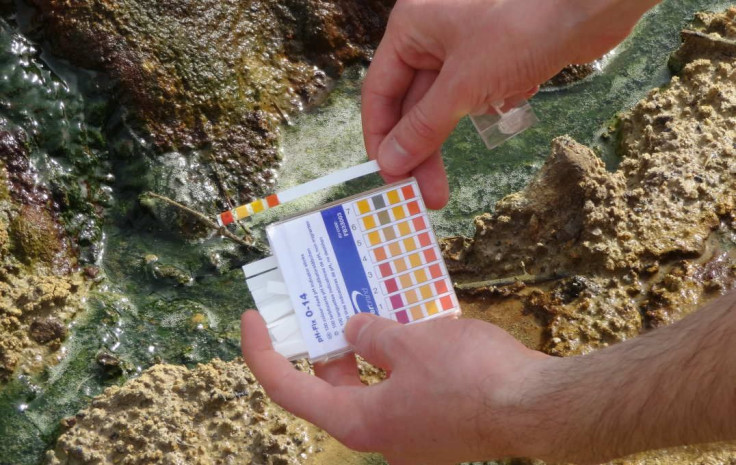Mars-Like Acid Streams Could Help Find Traces Of Past Martian Life

History of Mars has always been a major mystery. We know the red planet had water in its early days, but was there a time when it had all necessary conditions to support any form of life?
The answer remains unknown but several missions, on Mars as well as on Earth, are underway to find traces of ancient microbial life on the red planet. One such project revolves around exploring harsh Mars-like conditions on Earth and seeing how microbial life thrives in those environments.
Scientists have explored a number of places with varying degree of outcomes, but the most recent one, St Oswald’s Bay in Dorset, United Kingdom, indicates how much organic matter we may find on the Martian surface.
The highly acidic sulfur stream mimics the extreme conditions prevailing on a middle-aged Mars. In fact, researchers from Imperial College London have discovered traces of fatty acids, the building blocks of biological cells, on the site — a find that hints life may once have existed on the red planet.
The discovery was further bolstered when the team took a close look at the bay’s rock deposits. They noted the iron-rich mineral goethite present in the deposits hosts a number of microbes as well as traces of their fossilized remains.
As Goethite can transform into hematite, a mineral that is widely found on Mars and gives the planet its unique red color, the team posited “if these iron-rich minerals [can] harbor traces of life on Earth, then they might [also] hold clues to past microbial life on the red planet,” study co-author Mark Sephton said in a statement.
That said, using Dorset findings as a template for Mars, the team estimated there might be some 12,000 Olympic sized pools of organic matter on the Martian surfaces. These pools could be hosting fossilized traces of ancient Martian life, pretty much how ancient organic life was spotted in Dorset.
According to the latest work, future missions to Mars should target goethite or hematite-bearing rock deposits to find life on Mars. Unlike other minerals, these two do not react under the impact of heat, which means there are more chances of finding fossilized life there.
“Mars harbored water billions of years ago, meaning some form of life might have thrived there. If life existed before the water dried up, it would probably have left remains that are preserved to this day in Martian rock,” Sephton added. “We have yet to find convincing traces of organic matter that would indicate previous life on the Red Planet - but now we know which rocks to focus on.”
The study, titled “The Fate of Lipid Biosignatures in a Mars-Analogue Sulfur Stream,” was published in journal Scientific Reports.
© Copyright IBTimes 2025. All rights reserved.



















